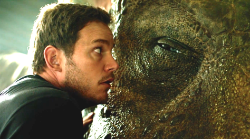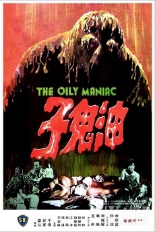
 Based on a Malaysian tall tale, if the credits are to be believed, The Oily Maniac proves Hong Kong’s esteemed Shaw Brothers Ltd. studio didn’t just make historical epics about hitting and kicking. Once in a blue moon — 1976, to be exact — it made a movie about a meek handicapped lawyer by day, petroleum-based monster by night.
Based on a Malaysian tall tale, if the credits are to be believed, The Oily Maniac proves Hong Kong’s esteemed Shaw Brothers Ltd. studio didn’t just make historical epics about hitting and kicking. Once in a blue moon — 1976, to be exact — it made a movie about a meek handicapped lawyer by day, petroleum-based monster by night.
And just to make it crazy, part of it takes place at a coconut oil garden.
Danny Lee (Infra-Man himself!) is Ah Sheng Yung, the legal eagle confined to arm crutches and braces, thanks to a childhood bout with polio. He’s quite self-conscious about his disability, bleating “Why am I crippled? Why?” as he beats his useless legs with balled fists. Just as his Uncle Bah is about to be executed for murdering a guy in self-defense, Sheng learns some news about his late father, Bah’s bro:
• Papa was an exorcist and a shaman.
• He tattooed Bah’s back with a spell to protect the less fortunate.
• If the spell is used for other reasons, Bah warns, you die “in a very, very bad way.”
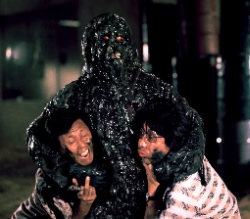 Naturally, Sheng traces Bah’s back on paper, goes home, digs a hole in the middle of the house, gets shirtless, lowers himself in, prays for peace and power, and — voilà! — transforms into The Oily Maniac. (Later switcheroos are brought about by dousing himself in diesel fuel straight from the gas-station pump and taking an impromptu bath in a barrel of tar at a construction site.) With superpowers not dissimilar to Swamp Thing, ol’ Oily looks like a bowel movement with yellow gumballs for eyes and a near-external heart that glows red as it beats. He can liquify into an animated blob — all the better to seep into cracks, slip under closed doors and glide across asphalt while chasing cars. He can regenerate body parts that get sliced off in the heat of battle. He can leap into the air with featherlight ease. And, like Hulk, when he turns back to Sheng, he always comes out of it with britches in place and intact.
Naturally, Sheng traces Bah’s back on paper, goes home, digs a hole in the middle of the house, gets shirtless, lowers himself in, prays for peace and power, and — voilà! — transforms into The Oily Maniac. (Later switcheroos are brought about by dousing himself in diesel fuel straight from the gas-station pump and taking an impromptu bath in a barrel of tar at a construction site.) With superpowers not dissimilar to Swamp Thing, ol’ Oily looks like a bowel movement with yellow gumballs for eyes and a near-external heart that glows red as it beats. He can liquify into an animated blob — all the better to seep into cracks, slip under closed doors and glide across asphalt while chasing cars. He can regenerate body parts that get sliced off in the heat of battle. He can leap into the air with featherlight ease. And, like Hulk, when he turns back to Sheng, he always comes out of it with britches in place and intact.
Fighting injustice in its various forms, Oily’s first order of business is saving his disinterested love interest, Yue (Ping Chen, The Mighty Peking Man), from attempted rape. Director Meng Hua Ho (The Cave of Silken Web) seems to revel in the sexual ickiness, or if not, he sure amps it up as the film proceeds. Another target is a suspect doctor who specializes in vaginal rejuvenation for prostitutes; Oily drops in on the operating room in a manner eerily prescient of David Cronenberg’s The Fly interrupting his beloved’s abortion, stirrups and all. Outdoing that may be the scene in which a pop-music starlet complains about her botched boob job; as she says, “She screwed it up totally,” she opens her shirt to reveal one gnarly, swollen, purple teat with enough topographic texture to rival a 3-D map of the moon.
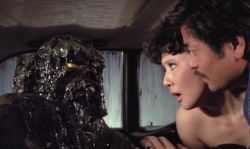 I’m not even sure why the movie features a courtroom scene of a Rashomon-esque rape trial, but it does, with the following exchange between perverted prosecutor and perjurious plaintiff:
I’m not even sure why the movie features a courtroom scene of a Rashomon-esque rape trial, but it does, with the following exchange between perverted prosecutor and perjurious plaintiff:
“Did he touch your breasts?”
“He did.”
“Was it the right one? Or left?”
“Both sides.”
Anyhoo, Oily enters her bathtub through the faucet, inflates like a water balloon, and kills her, so I guess that’s why it’s there. Reason or no, the filmmakers must have been hitting the opium den pretty hard. As if the title didn’t scream as much, The Oily Maniac is so utterly insane, it comes bundled in its own straightjacket. If nothing else, you’ll love this psychedelic pile of comic-book pulp for that reason alone.
Oh, one more thing: If Troma co-founder Lloyd Kaufman didn’t see The Oily Maniac before creating The Toxic Avenger, then someone damn sure told him about it. The evidence is too messy to ignore, your honor. —Rod Lott

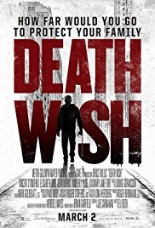
 In today’s times, people aren’t exactly in the mood for a story about a vigilante with a penchant for gun violence, even if his targets really, really deserve it. Now, in the 1970s, absolutely, which is why the Charles Bronson-starring
In today’s times, people aren’t exactly in the mood for a story about a vigilante with a penchant for gun violence, even if his targets really, really deserve it. Now, in the 1970s, absolutely, which is why the Charles Bronson-starring 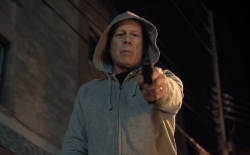
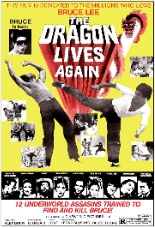
 One wonders if Bruce Lee might have laid off the painkillers, if only he could have known how sullied his good name would be by
One wonders if Bruce Lee might have laid off the painkillers, if only he could have known how sullied his good name would be by 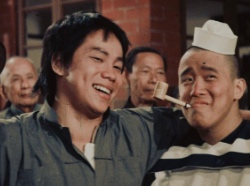
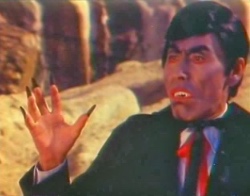
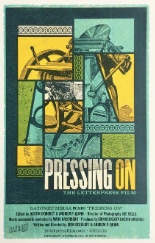
 Not terribly long ago, vinyl was considered a dead medium. Then hipsters discovered it and made it viable again. The same could happen (or at least should) to letterpress printing — that is, the near-lost art of pressing inked blocks of metal type onto paper. Created by Gutenberg (
Not terribly long ago, vinyl was considered a dead medium. Then hipsters discovered it and made it viable again. The same could happen (or at least should) to letterpress printing — that is, the near-lost art of pressing inked blocks of metal type onto paper. Created by Gutenberg (

 After all the carnage and tragedy that befell so many humans in the events of 2015’s
After all the carnage and tragedy that befell so many humans in the events of 2015’s 